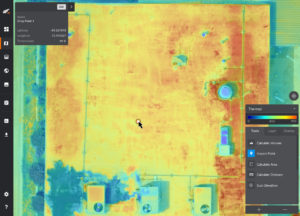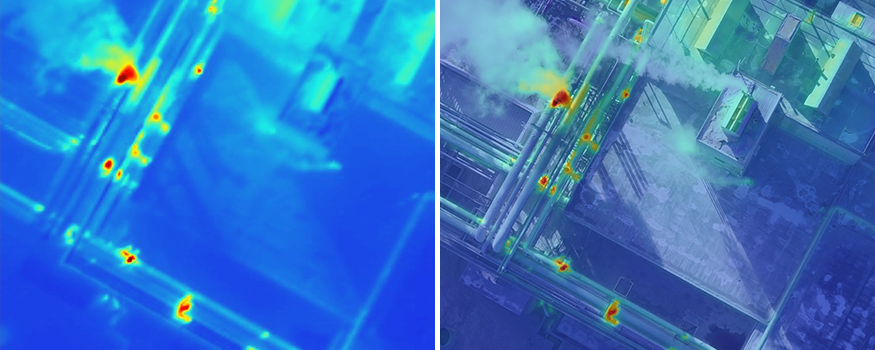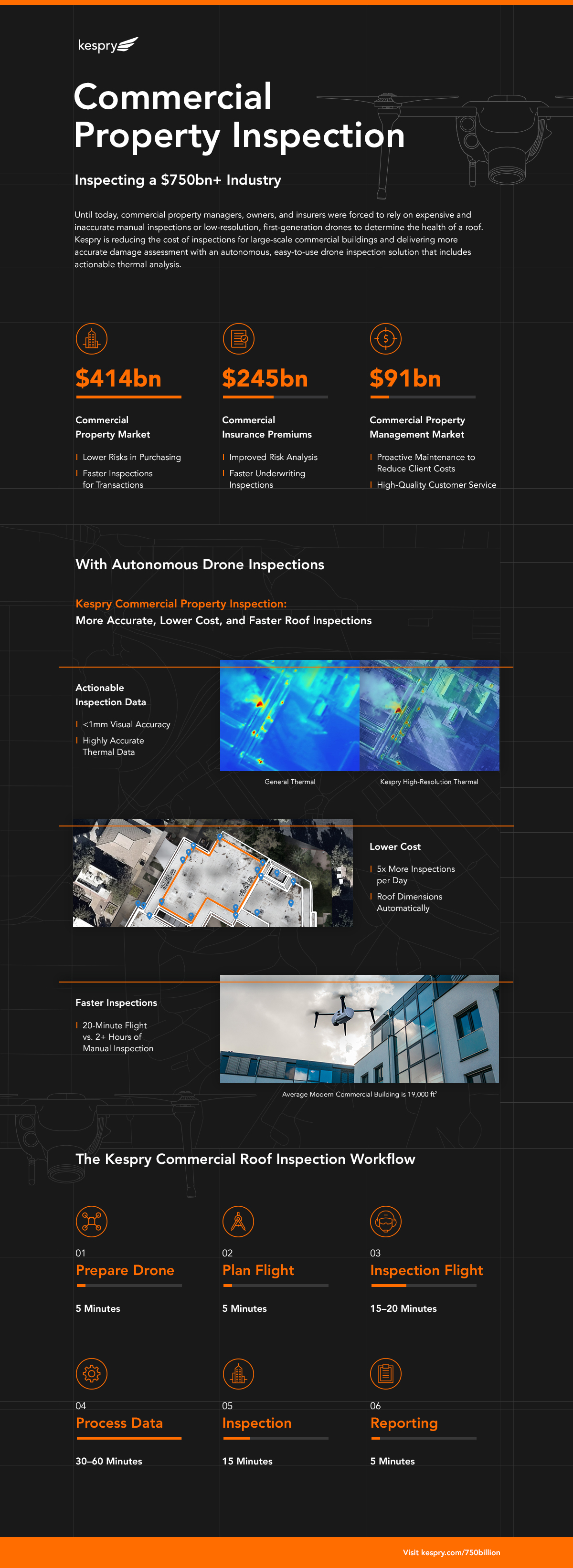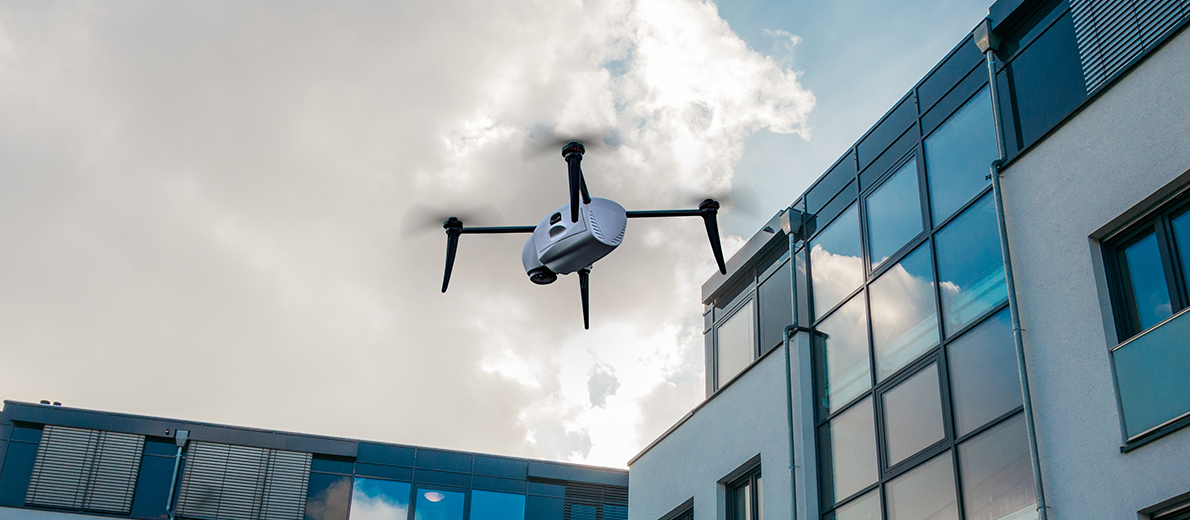Today, Kespry announced the upcoming availability of a radiometric thermal capability for our drone-based aerial intelligence platform. This is a really cool addition to our platform that will enable industrial facility inspection. It also marks an important opportunity for a new set of organizations in the commercial property industry to gain the value of an accurate, easy-to-use, and safe way to inspect roofs.
The commercial property market in the US is, quite frankly, enormous. The real estate, insurance, and property management sub-markets add up to at least $750 billion in transactions alone. However, the scale of assets in the building themselves is dwarfed by the value in production delivered beneath the roofs of those buildings, so it was surprising for me to learn how infrequently the roofs of these buildings are inspected for damage, potential for future damage, or any issues with the critical infrastructure so often found up there.
It’s somewhat obvious why this is the case:
- These are often very large spaces—recently built commercial properties average over 19,000 square feet—so inspecting them even once at the point of a transaction or insurance event is a time-consuming effort.
- Property and facilities management has traditionally been a somewhat reactive function, especially when facilities managers are responsible for multiple, distributed properties.
The net of this is that a commercial property is most likely to be inspected when a storm or other event has occurred, an insurance activity such as underwriting or risk analysis requires it, or an ownership transaction is occurring (which is when you are most likely to see a drone involved in the process).
 Kespry’s thermal drone inspection solution provides radiometric
Kespry’s thermal drone inspection solution provides radiometric
temperature data, enabling pinpoint accuracy for identifying damage.
We at Kespry are looking to change that through applying our expertise and knowledge of the inspection process for roofs and through the addition of actionable, accurate, and fast commercial roof inspections that include thermal data.
This solution includes:
- Radiometric temperature analysis delivering a specific temperature at a specific point on a roof instead just temperature trends or variations from non-radiometric drone data
- The combination of high-resolution visual data with radiometric thermal data to enable inspections to accurately identify the specific point of concern instead of relying on grainy, ill-defined thermal overlays
- Roof dimension data to allow inspectors to complete their analysis and reports much faster than waiting for manual measurements or third-party data
So, why do these new thermal capabilities matter so much to the commercial property industry? The easiest answer is that combining an accurate and easy-to-use autonomous drone to do inspections with a radiometric thermal sensor should save property owners hundreds of millions of dollars in reduced repair and maintenance costs. Issues can be identified that aren’t obvious from a visual inspection—for example, water pooling under a flat roof above a critical piece of equipment—and the complete inspection can be completed minutes instead of the hours or days associated with a manual inspection.
 Conventional thermal drone imaging (left) contrasted with
Conventional thermal drone imaging (left) contrasted with
Kespry’s detailed, radiometric thermal capabilities (right).
Combining thermal sensors with drones is not new but has generally been implemented for highly-specialized use cases to this point, notably in the public safety and security sectors. There are other drone vendors who offer thermal data in their solutions, but accuracy really matters when billions of dollars of property and facilities are at risk. The vast majority of existing drone solutions simply provide the option of layering low-resolution, non-radiometric data with standard drone imagery. This leaves surveyors, risk assessors, and roof inspectors guessing at the specific location of a thermal anomaly such as a leak, pooling of liquid, or site of damage. Alternative solutions could be as much as 20% less accurate due to a combination of low-resolution data and non-radiometric thermal data.
Using previous thermal drone inspection offerings is like making a health decision based on trends in the population instead of your specific blood pressure reading. With Kespry, commercial property owners, managers, and risk assessors can deliver the specificity and accuracy to make decisions in a matter of minutes. We’re excited to bring this solution to commercial property inspection and look forward to evolving it to further reduce the cost of unseen damage.
You can also have a look at our new infographic below illustrating our new offering and the issues it helps solve.


